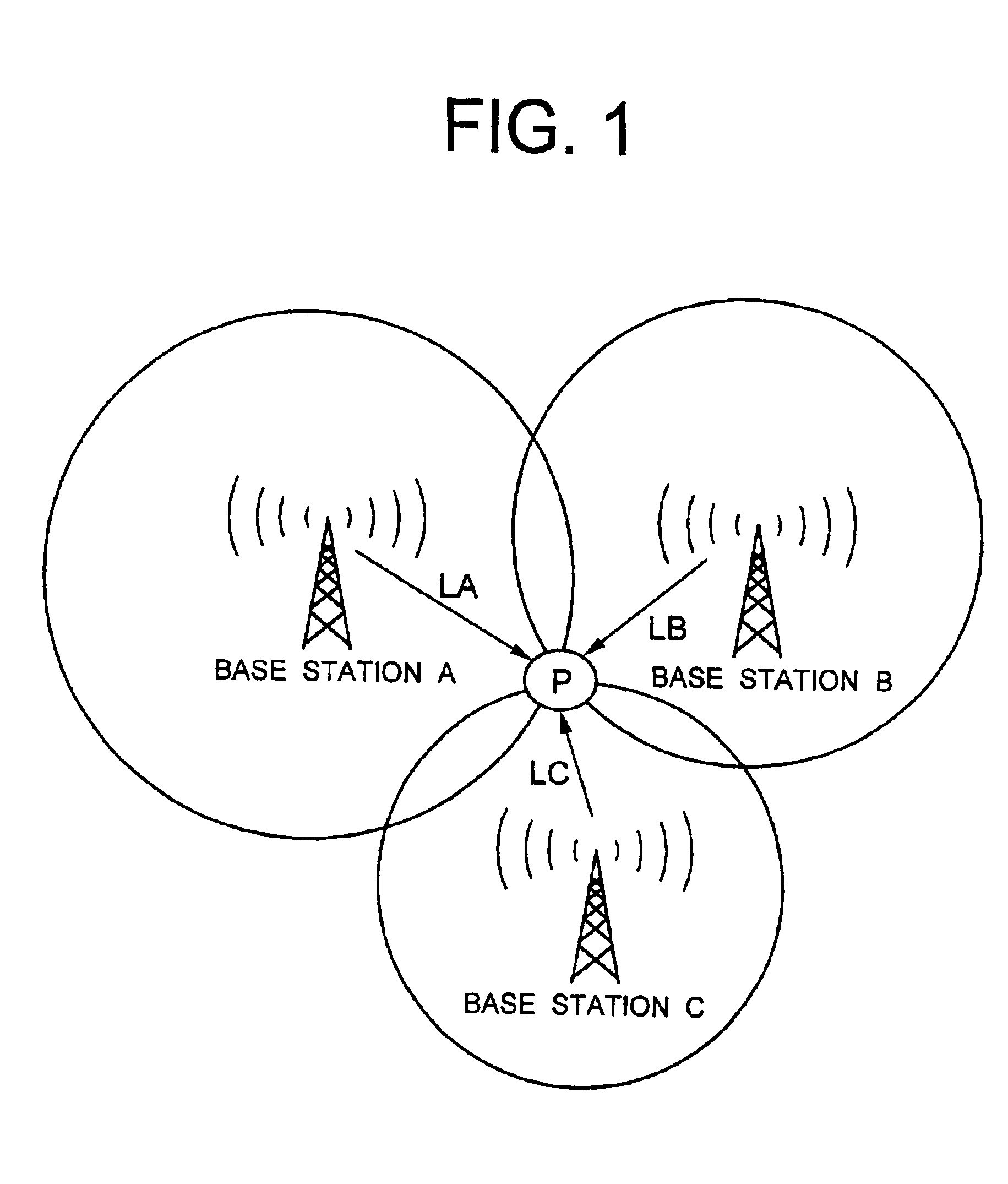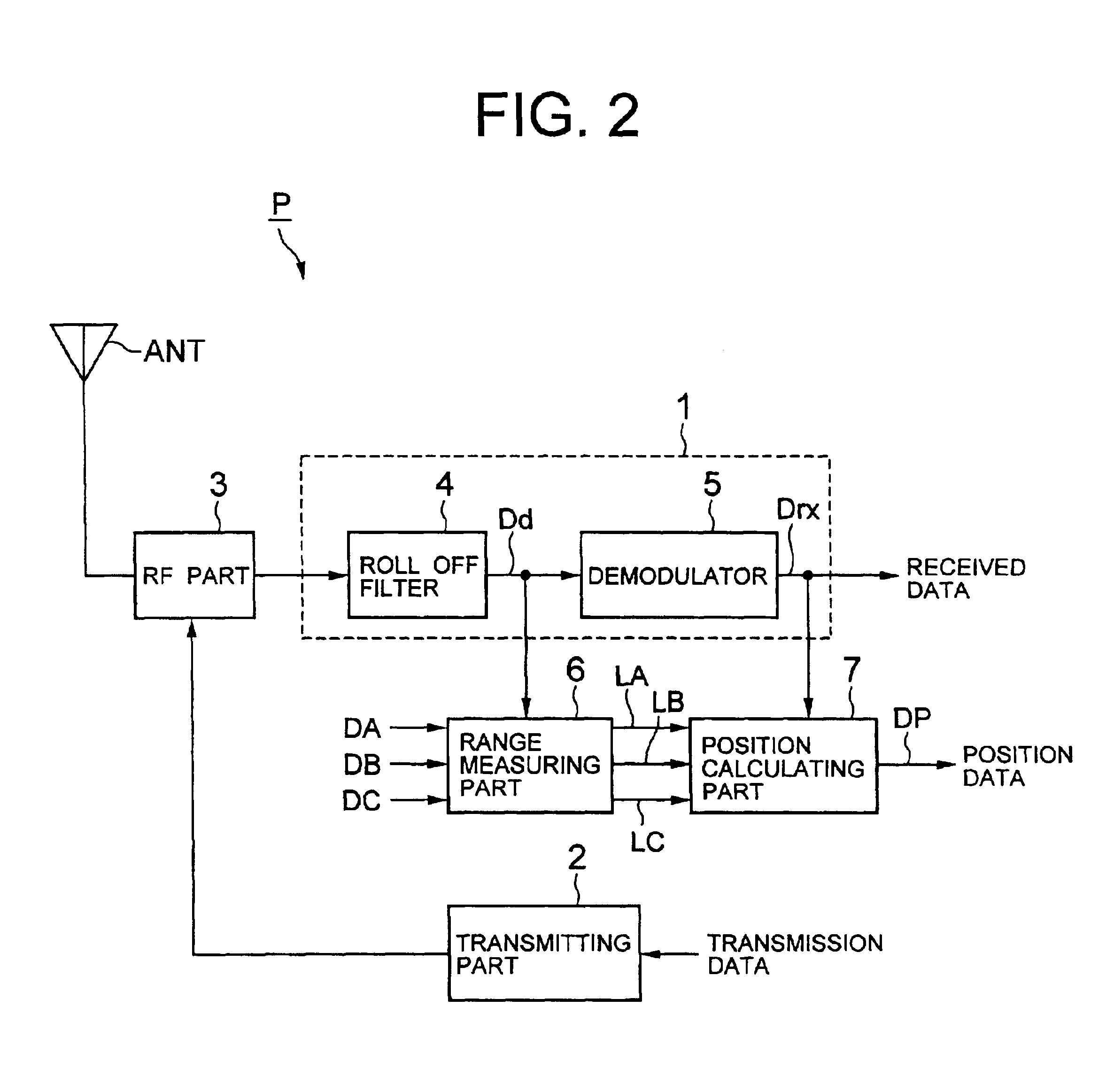Method and apparatus for positioning a mobile station
a mobile station and positioning method technology, applied in the field of communication systems, can solve the problems of improving positioning accuracy, affecting the accuracy of positioning, and difficulty in distinguishing direct waves from noise, so as to achieve accurate positioning of mobile stations
- Summary
- Abstract
- Description
- Claims
- Application Information
AI Technical Summary
Benefits of technology
Problems solved by technology
Method used
Image
Examples
first embodiment
In the following, the present invention will be described.
FIG. 8 is a diagram schematically representing the general configuration of a mobile communications system which utilizes a broadband CDMA (Code Division Multiple Access) scheme, one type of spread spectrum (SS) scheme, wherein a hexagonal cell based zone organization method is shown as one example. For reference, a zone refers to an area in which radio waves from a base station can reach, and the zone organization method refers to a method which involves assigning a plurality of predetermined frequencies to base stations in respective zones and relying on the zones to closely cover a whole communication service area.
Specifically, in the mobile communications system according to the first embodiment, the communication area has been previously partitioned into a plurality of hexagonal zones called “cells.” A base station is installed in each cell, and is designed such that each cell extends over a range in which radio waves ca...
second embodiment
(Second Embodiment)
Next, a second embodiment of the present invention will be described. For reference, the second embodiment relates to a modified embodiment of the positioning apparatus 10 described in the first embodiment.
The mobile station of the second embodiment is similar in configuration to the mobile station 10 of the first embodiment illustrated in FIGS. 9 through 11. Also, since the positioning processing is performed based on the principles similar to the positioning principles described with reference to FIGS. 11 and 12A through 12C, description on the configuration and positioning principles of the mobile station in the second embodiment is omitted.
However, the mobile station in the second embodiment operates in accordance with the positioning processing illustrated in FIG. 23 instead of the positioning processing illustrated in FIGS. 15 through 21 in the positioning processing steps of the positioning apparatus 10 in the first embodiment described with reference to FI...
third embodiment
(Third Embodiment)
Next, a third embodiment of the present invention will be described with reference to FIGS. 24-27.
In the aforementioned first and second embodiments, the positioning apparatus 10 of the mobile station receives incoming radio waves from base stations to determine its own current position (xp, yp). On the other hand, the third embodiment, described below, is such that base stations determine the current position (xp, yp) of a mobile station to accomplish highly accurate positioning which suppresses the influence of multipath fading, noise and the like.
Specifically, according to the third embodiment, as schematically illustrated in FIG. 24, as a mobile station 10 transmits a radio wave for requesting positioning (hereinafter called the “positioning radio wave”) at an arbitrary position within a communication area, base stations A, B, C, for example, located around the mobile station 10 receive this positioning radio wave. Then, each of the base stations A, B, C and a ...
PUM
 Login to View More
Login to View More Abstract
Description
Claims
Application Information
 Login to View More
Login to View More - R&D
- Intellectual Property
- Life Sciences
- Materials
- Tech Scout
- Unparalleled Data Quality
- Higher Quality Content
- 60% Fewer Hallucinations
Browse by: Latest US Patents, China's latest patents, Technical Efficacy Thesaurus, Application Domain, Technology Topic, Popular Technical Reports.
© 2025 PatSnap. All rights reserved.Legal|Privacy policy|Modern Slavery Act Transparency Statement|Sitemap|About US| Contact US: help@patsnap.com



